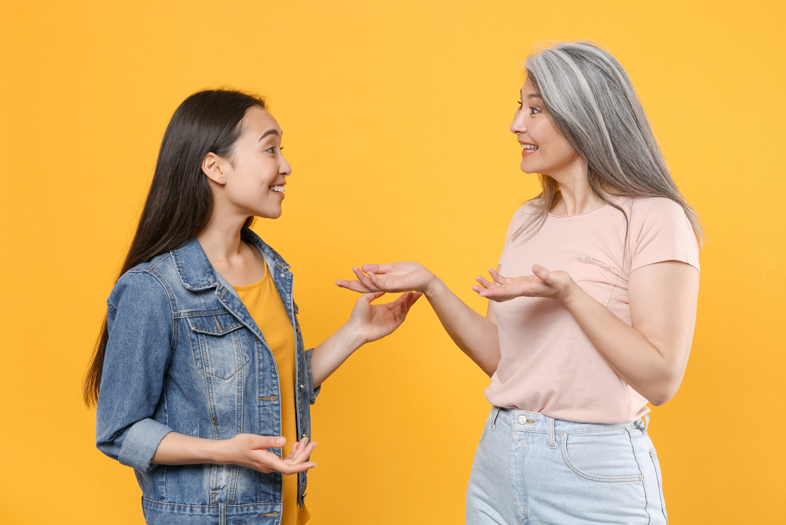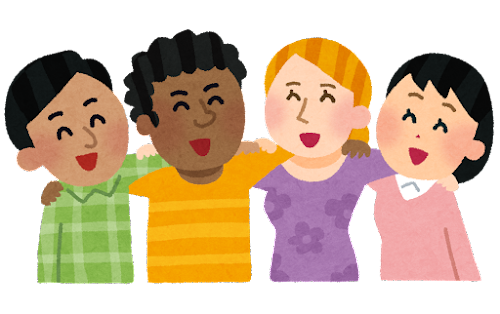Part A Self Introduction
自己紹介をする

Part A_1 Self Introduction
Let’s introduce ourselves to each other.
My name is ________. What is your name?
Part A_2 Self Introduction
I am ________. Nice to meet you.


Part A_3 Self Introduction
Nice to meet you too, ________. What’s your plan for this weekend?
Part A_2 Self Introduction
| Answer: |

Part B Vocabulary
Let’s check the meaning and pronunciation of English words.

Part B_1 Vocabulary
We’ll read aloud the words below. Please repeat after me. I will check your pronunciation.
(Please send the mispronounced words and expressions to your student.)
講師の真似をして単語を発音しましょう。
Part B_2 Vocabulary
|
You should speak louder.
もっと大きな声で話してください。
|
|
|
I advise you to practice more.
もっと練習することをおすすめします。
|
|
|
It’s better to use your hands more when speaking.
話すときにもっと手を使ったほうがいいです。
|
|
 |
communicate
伝える
|
 |
opposite
正反対の、逆の
|


Part B_3 Vocabulary
Now, let’s review some words from part B_2.
(Please review the mispronounced words and expressions from part B_2.)
復習しましょう。
Part B_4 Vocabulary

Part C Role play
Talk about the following situations.

Part C_1 Role play
Let’s do a role play with the given situations. You can use the phrases in Part B_2.
Part B_2のフレーズを使ってロールプレイをしてみましょう。
Part C_2 Role play
| Situation 1: |
Your friend is going to make a speech. What advice would you give him/her?
(Your tutor will pretend to be your friend.)
|
| Items to mention: |
– the volume of the voice – the gestures he/she should make – I advise you to ______________________. |

Part C_3 Role play
| Situation 2: |
You and your classmates are talking about what is better communication. Tell him/her your opinion.
(Your tutor will pretend to be one of your classmates.)
|
| Items to mention: |
– We should speak clearly when we want to communicate something. – It’s better to use our hands when we talk. – gestures and facial expressions for better communication |


Part C_4 Role play
Your answers were fantastic! Now, let’s review your answers.
(Please review your student’s answers by sending the correct answers in complete sentences. After that, ask your student to read aloud his or her corrected answers.)
復習しましょう。
Part C_5 Role play

Part D Reading
Read the passage and check your pronunciation. Make sure you understand the content.

Part D_1 Reading
Please read aloud the passage below. I will check your pronunciation and intonation.
(Please send the mispronounced words and phrases to your student.)
文章を読みましょう。
Part D_2 Reading
Non-verbal communication

Speaking is not the only way to communicate. We also use our arms and hands to show our moods, ask questions, and give information. This is called non-verbal communication.
It can have different meanings from place to place. For example, shaking your head means “No” in Britain and Japan. But it can have the opposite meaning in Bulgaria. Different cultures also have different types of non-verbal communication. In Japan, people bow to greet each other. In many Western countries, however, they shake hands or hug.
Many good speakers use non-verbal communication in presentations. For example, they keep eye contact with the audience while speaking. This way, listeners pay more attention to what the speaker is saying.
If you use non-verbal communication well, you will be able to express your thoughts and feelings better.


Part D_3 Reading
Now, let’s review some words and expressions from part D_2.
(Please review the mispronounced words and expressions from part D_2.)
復習しましょう。
Part D_4 Reading


Part D_5 Comprehension check
Now, I will ask the following questions. Please answer based on the passage. I will check if your sentences are complete and if the grammar is correct.
(Please send the sentences that need grammar corrections to your student.)
講師が質問するので音読した文章の内容に沿って答えましょう。

Part D_6 Comprehension check
| 1. | What is non-verbal communication? |
Part D_7 Comprehension check
| Answer: |


Part D_8 Comprehension check
| 2. | If we use non-verbal communication well, what will we be able to do? |
Part D_9 Comprehension check
| Answer: |


Part D_10 Comprehension check
Now, let’s review your answers.
(Please review your student’s answers by sending the correct answers in complete sentences. After that, ask your student to read aloud his or her corrected answers.)
復習しましょう。
Part D_11 Comprehension check

Part E Q&A
Answer the questions and check your grammar. Make sure you understand the content.

Part E_1 Q&A
Now, you will answer the questions. I will check if your sentences are complete and if the grammar is correct.
(Please send the sentences that need grammar corrections to your student.)
質問をしますので答えましょう。

Part E_2 Q&A
| 1. | What kind of body language do you use in communication with your friends and family? |
Part E_3 Q&A
| Answer: |


Part E_4 Q&A
| 2. | What do you feel when people make eye contact with you? |
Part E_5 Q&A
| Answer: |


Part E_6 Q&A
| 3. | How do you feel when someone is crossing his/her arms? What do you think it means? |
Part E_7 Q&A
| Answer: |


Part E_8 Q&A
| 4. | When you talk to your friends, is there any non-verbal communication you pay attention to? What is it? |
Part E_9 Q&A
| Answer: |


Part E_10 Q&A
Now, let’s review your answers.
(Please review your student’s answers by sending the correct answers in complete sentences. After that, ask your student to read aloud his or her corrected answers.)
復習しましょう。
Part E_11 Q&A

Part F Free talk
Talk about the following topics.

Part F_1 Free talk
Let’s do a free talk about the following topics.
(Please do a free talk if you have time left.)
フリートークをしましょう。


Part F_2 Free talk
What gestures do you use in your daily life?
What does it mean? When do you use it?
What does it mean? When do you use it?
Part F_3 Free talk
| Answer: |


Part F_4 Free talk
When you meet someone for the first time, what do you pay attention to?
Smile more than usual? What about physical distance? Tell me more.
Smile more than usual? What about physical distance? Tell me more.
Part F_5 Free talk
| Answer: |


Part F_6 Free talk
What color do you like?
What impression do you get from your favorite color?
What color expresses you the most?
What color do you wear often?
What impression do you get from your favorite color?
What color expresses you the most?
What color do you wear often?
Part F_7 Free talk
| Answer: |
